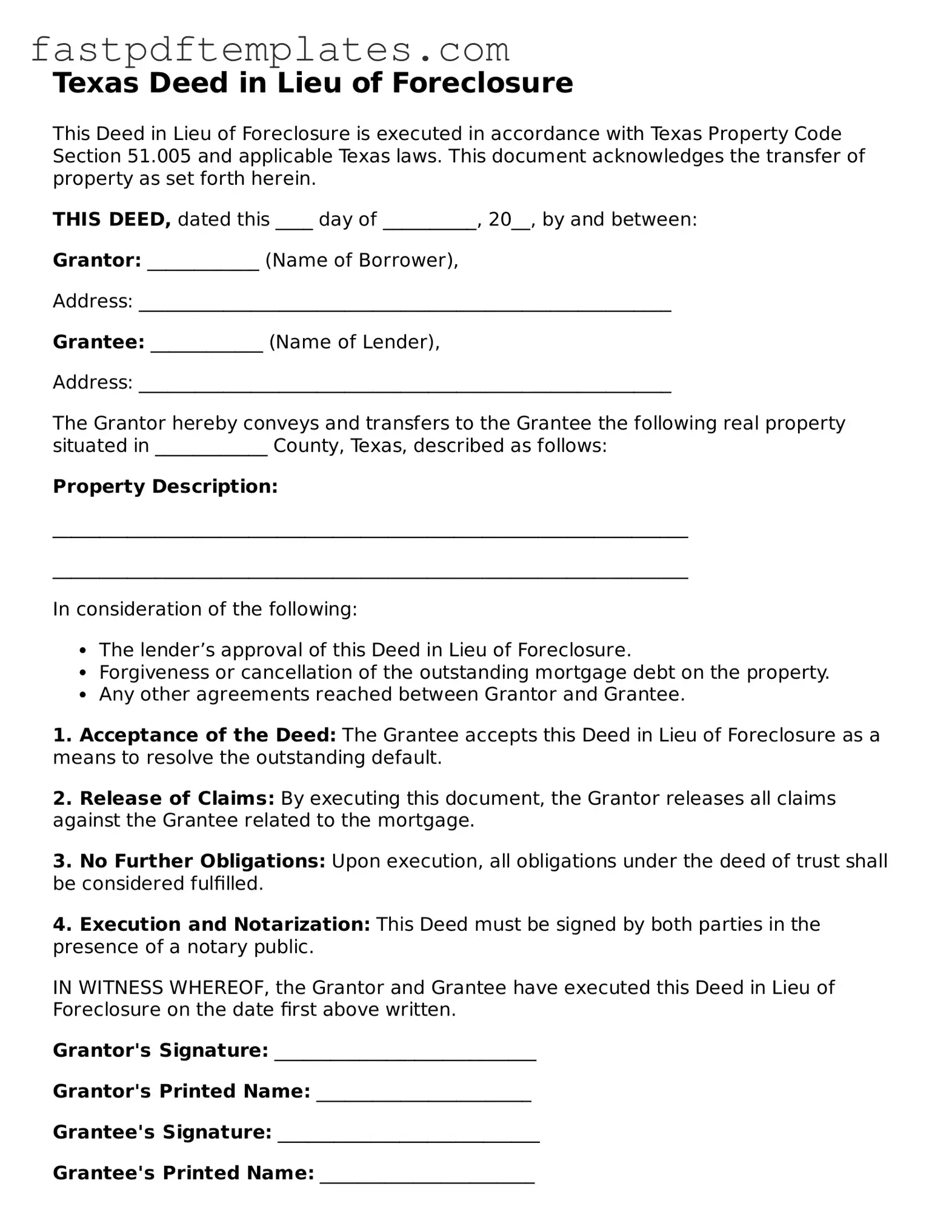Texas Deed in Lieu of Foreclosure
This Deed in Lieu of Foreclosure is executed in accordance with Texas Property Code Section 51.005 and applicable Texas laws. This document acknowledges the transfer of property as set forth herein.
THIS DEED, dated this ____ day of __________, 20__, by and between:
Grantor: ____________ (Name of Borrower),
Address: _________________________________________________________
Grantee: ____________ (Name of Lender),
Address: _________________________________________________________
The Grantor hereby conveys and transfers to the Grantee the following real property situated in ____________ County, Texas, described as follows:
Property Description:
____________________________________________________________________
____________________________________________________________________
In consideration of the following:
- The lender’s approval of this Deed in Lieu of Foreclosure.
- Forgiveness or cancellation of the outstanding mortgage debt on the property.
- Any other agreements reached between Grantor and Grantee.
1. Acceptance of the Deed: The Grantee accepts this Deed in Lieu of Foreclosure as a means to resolve the outstanding default.
2. Release of Claims: By executing this document, the Grantor releases all claims against the Grantee related to the mortgage.
3. No Further Obligations: Upon execution, all obligations under the deed of trust shall be considered fulfilled.
4. Execution and Notarization: This Deed must be signed by both parties in the presence of a notary public.
IN WITNESS WHEREOF, the Grantor and Grantee have executed this Deed in Lieu of Foreclosure on the date first above written.
Grantor's Signature: ____________________________
Grantor's Printed Name: _______________________
Grantee's Signature: ____________________________
Grantee's Printed Name: _______________________
State of Texas
County of ______________
SUBSCRIBED AND SWORN to before me on this ____ day of ____________, 20__.
Notary Public in and for the State of Texas
My Commission Expires: ________________
